On the occasion of the World Tourism Day 2024, we are going to visit ten unexpected places in Lazio not to be missed. We will discover two extraordinary sites in each province, often little known and absolutely unique, immersed in a gorgeous nature, amazing architecture and mystery.
The Farfa Gorges
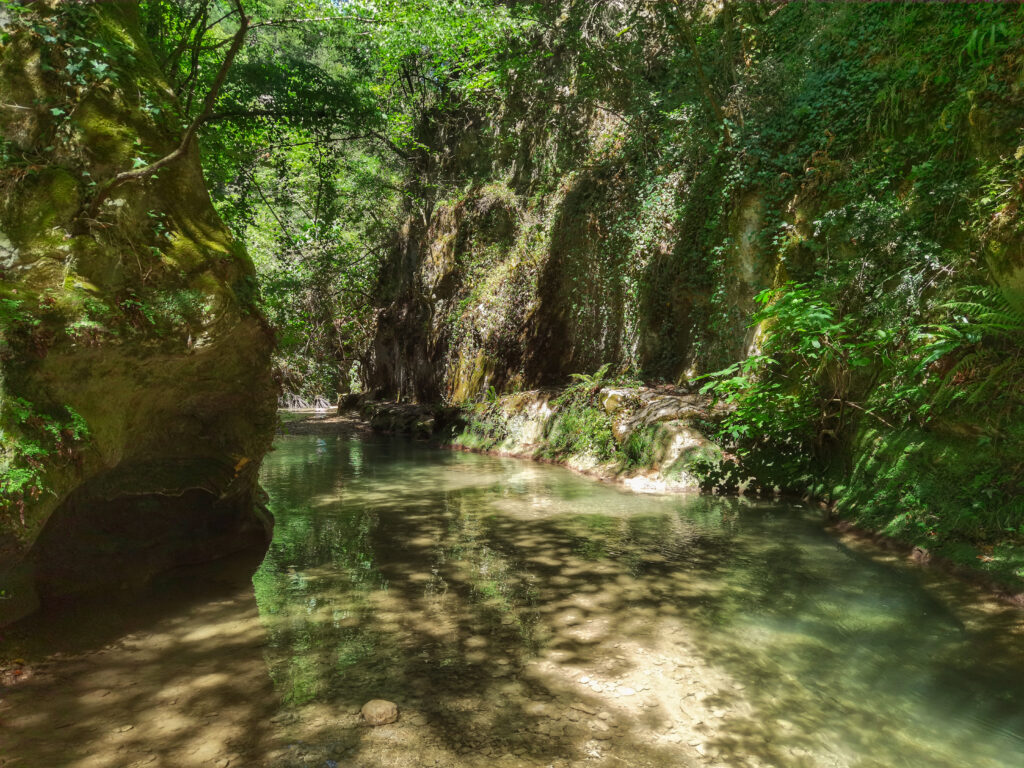
Farfa Gorges in Mompeo
The “Monumento Naturale Gole del Farfa” is perfect for canyoning and water-trekking lovers, a paradise in the lush nature of Mompeo in Sabina. Over the centuries, the Farfa River, flowing in a bed of pebbles, has formed bends and canyons, whirlpools and natural waterfalls.
The Caves of Val de’ Varri in Pescorocchiano
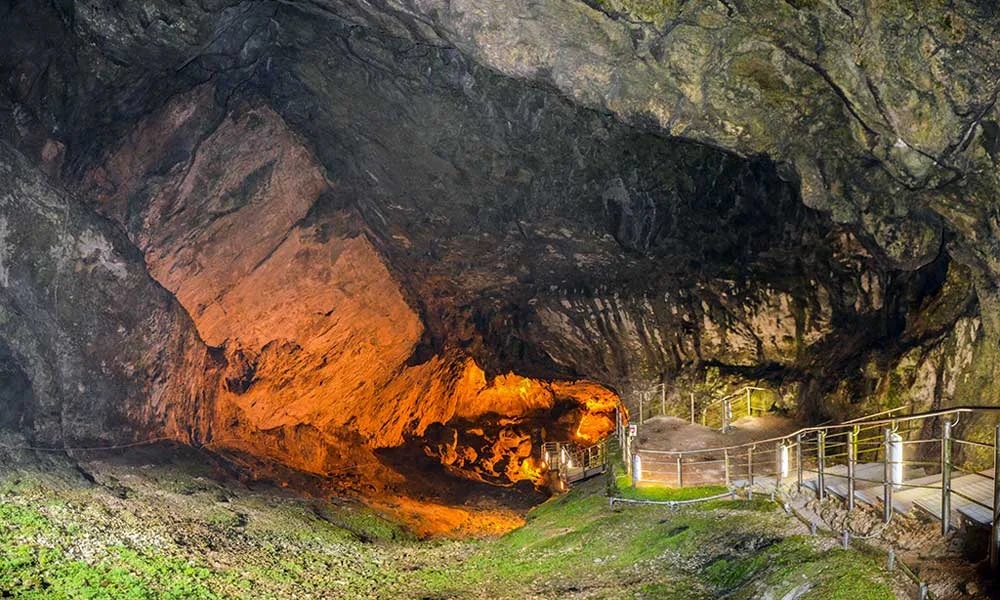
The Caves of Val de’ Varri in Pescorocchiano
Let us reach the Caves of Val de’ Varri in Pescorocchiano, in the Cicolano area, by the shores of Lago del Salto. We proceed towards Monte Sant’Angelo along the foaming path of underground waterfalls, admiring the extraordinary stalactites and stalagmites. The 1800 metres dug by the Rio Varri in the karst cavities are a testimony of the ancient Bronze Age.
The Split Mountain
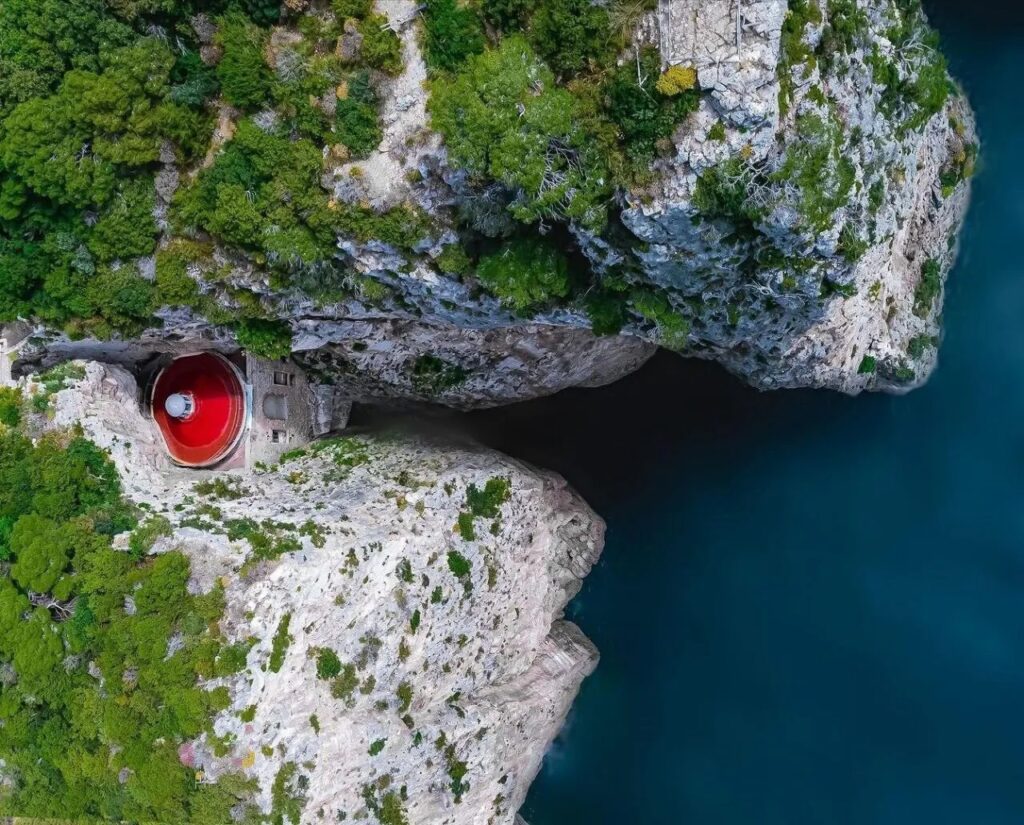
The Split Mountain in Gaeta
The “Parco della Riviera di Ulisse“ hides an incredible mystery, the Split Mountain of Gaeta, surrounded by the sparkling Tyrrhenian Sea. The mountain preserves the Sanctuary of the SS. Trinità and, it is said, the handprint of a Turkish man on a rock inside a cave. According to legend, after the death of Jesus Christ, when the veil of the Jerusalem Temple was torn, a terrible earthquake made the mountain split into three slits.
The Villa of Tiberius

The Villa of Tiberius in Sperlonga
A visit to the Villa of Tiberius is a dive into the splendour of Imperial Rome. This impressive archaeological site in Sperlonga, includes a cave (nymphaeum) on the sea, a fish farm and thermal baths. The Villa also hosts the “Museo Archeologico Villa di Tiberio”, which displays reproductions of huge statues depicting the myth of Ulysses, originally exhibited in natural caves.
The Caves of Pastena
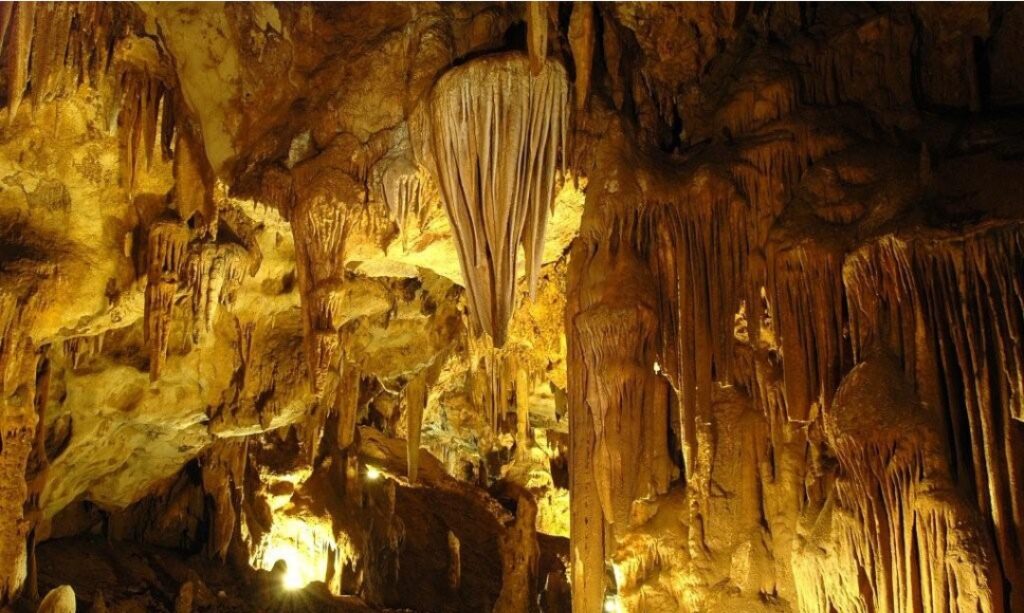
The Caves of Pastena
The Pastena Caves in the “Parco dei Monti Ausoni e Lago di Fondi” in Ciociaria, are among the most relevant speleological complexes in Lazio. In this fantastic world, we will discover different geological eras, through peculiar karst columns of stalactites and stalagmites. Not to be missed, the waterfall in the “Sala del Lago Blu”, the “Sala del Salice” and the “Sala dei Pipistrelli”.
The Blue Heart
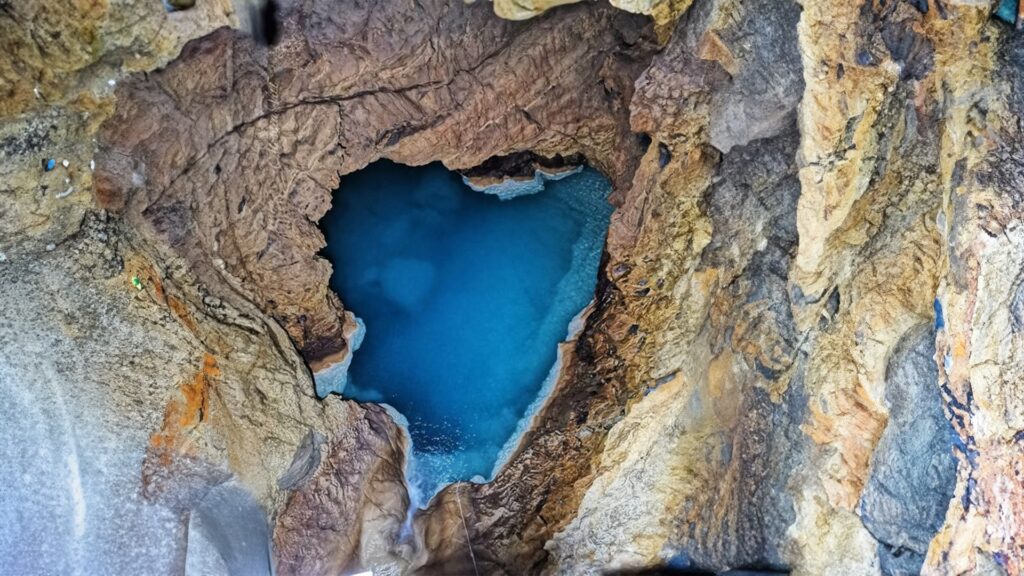
The Blue Heart in the Falvaterra Caves
The “Monumento Naturale Grotte di Falvaterra” hosts extraordinary karst caves and tunnels, where waterfalls and rapids flow. Following one of the various itineraries, you will come across a breathtaking heart-shaped lake! An experience you will never forget.
The Moai
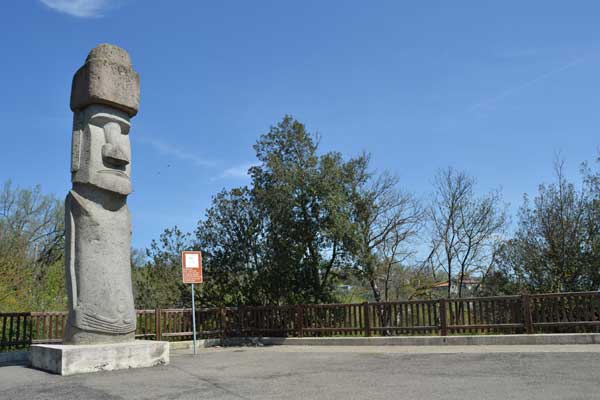
The Moai in Vitorchiano
Not many know that Vitorchiano, a medieval village in Tuscia, hosts the only Moai statue existing outside Easter Island. The monolith in peperino, a typical volcanic stone from the Cimini Mountains, was created by eleven Maori natives with axes and sharp stones. A perfect copy of the original ones, the huge Moai, with its enigmatic gaze, protects the suspended village.
The Sacred Woods of Bomarzo
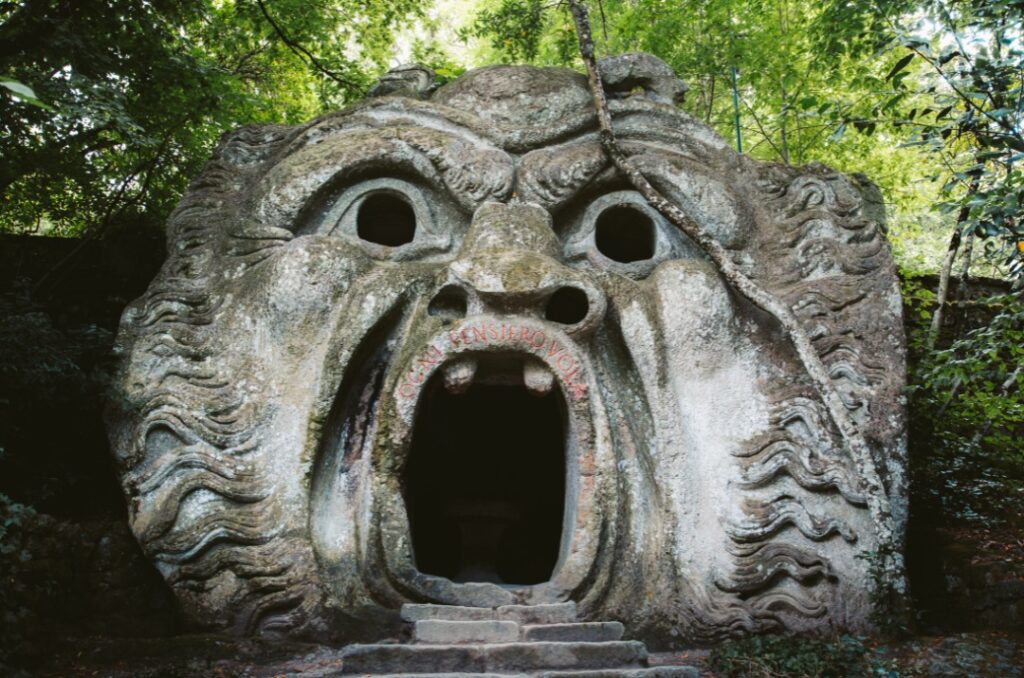
The Sacred Woods of Bomarzo
Bizarre constructions, monstrous creatures, mythological animals, optical illusions and hidden enigmas to be solved, the Sacred Woods of Bomarzo in Tuscia offers all lovers of baroque atmospheres an extraordinary experience. Let us get lost in the Sacred Woods, which also inspired Salvador Dalí, in search of its secrets, and let our imagination run wild.
The Sculpted Mountain
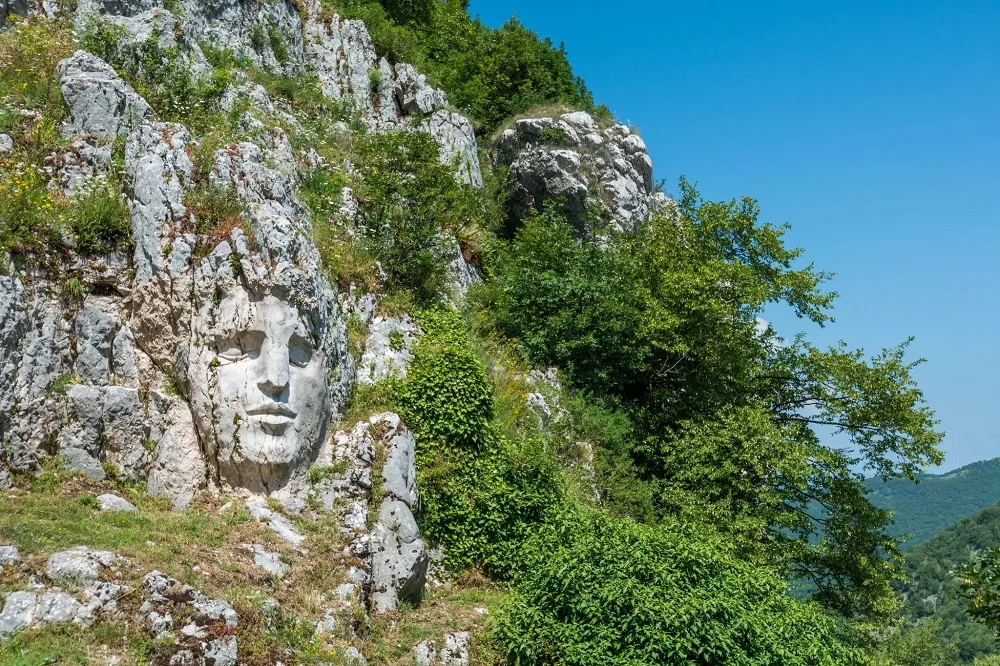
The Sculpted Mountain in Cervara di Roma
Walking through the beech forests of the “Parco dei Monti Simbruini”, we come across the Mountain of the Artists, an open-air museum in Cervara di Roma. The two Staircases of Peace and of the Artists have been engraved by painters, writers, intellectuals and musicians, included Ennio Morricone, who, since the nineteenth century, have been inspired by the village.
The Caldara di Manziana
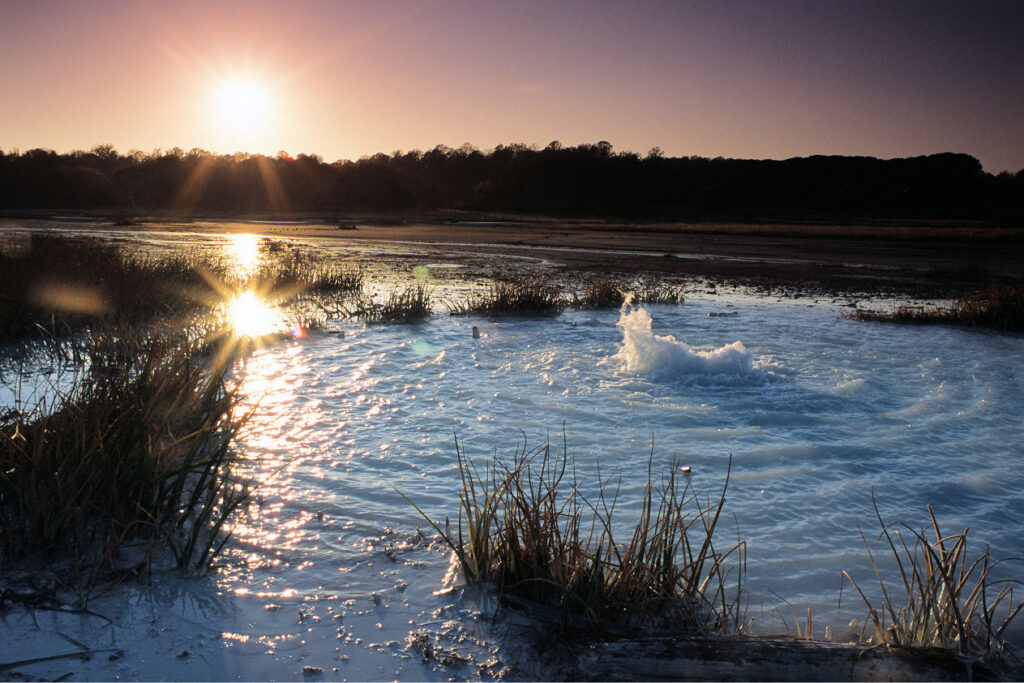
The Caldara di Manziana
We continue towards the Bosco di Macchia Grande, among birches, alders and ferns, to reach the “Monumento Naturale Caldara di Manziana”, with its steaming geysers, generated by underground sulphurous water heated by magma. The formula of the philosopher’s stone, which turns lead into gold, is said to be found here, who knows?
